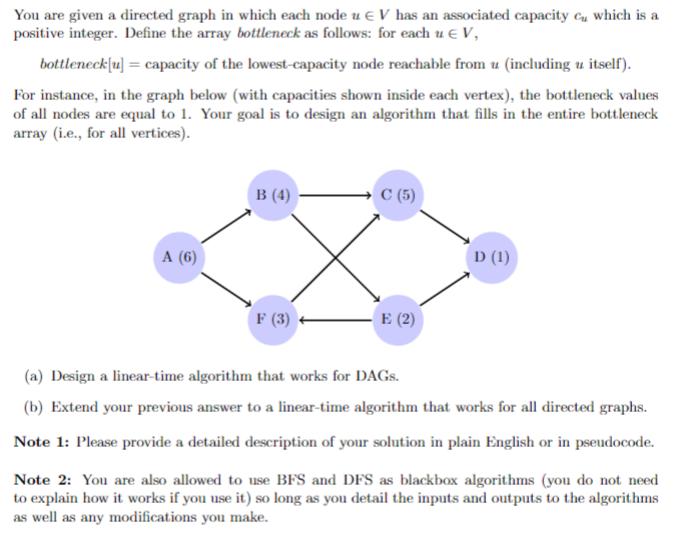Answered step by step
Verified Expert Solution
Question
1 Approved Answer
You are given a directed graph in which each node u V has an associated capacity which is a positive integer. Define the array

You are given a directed graph in which each node u V has an associated capacity which is a positive integer. Define the array bottleneck as follows: for each u EV, bottleneck[u] = capacity of the lowest-capacity node reachable from u (including u itself). For instance, in the graph below (with capacities shown inside each vertex), the bottleneck values of all nodes are equal to 1. Your goal is to design an algorithm that fills in the entire bottleneck array (i.e., for all vertices). A (6) B (4) F (3) C (5) E (2) D (1) (a) Design a linear-time algorithm that works for DAGS. (b) Extend your previous answer to a linear-time algorithm that works for all directed graphs. Note 1: Please provide a detailed description of your solution in plain English or in pseudocode. Note 2: You are also allowed to use BFS and DFS as blackbox algorithms (you do not need to explain how it works if you use it) so long as you detail the inputs and outputs to the algorithms as well as any modifications you make.
Step by Step Solution
There are 3 Steps involved in it
Step: 1

Get Instant Access to Expert-Tailored Solutions
See step-by-step solutions with expert insights and AI powered tools for academic success
Step: 2

Step: 3

Ace Your Homework with AI
Get the answers you need in no time with our AI-driven, step-by-step assistance
Get Started


